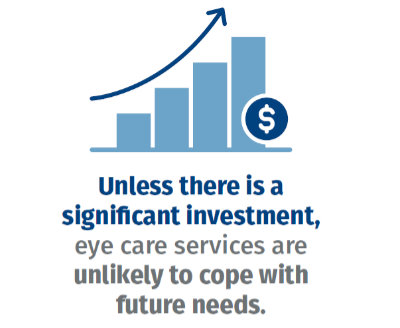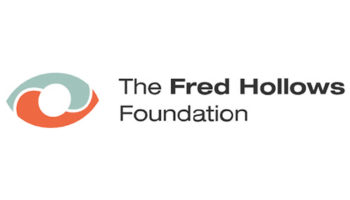Join a powerful, unprecedented alliance for better eye health for all.
Join IAPBMagnitude and Projections
Projected Change in Vision Loss 2020 to 2050
The number of people with vision loss is growing
Projections show that vision loss will increase by 55%, or 600 million people over the next 30 years.

This means the need for eye care is set to surge in the coming years.
There are two key drivers for this: ageing and lifestyle changes.
Ageing population
The global population is predicted to grow by 25% by 2050, reaching 9.7 billion.
By 2050, the number of people over 65 will almost double (from one in 11 people, to 1 in six people).
The number of persons aged 80 years or over is projected to triple, from 140 million in 2019 to 420 million in 2050.
This is concerning as the prevalence of vision loss increases rapidly with age.
For example age is associated with increased prevalence of cataract, age-related macular degeneration and glaucoma.
Filters:
Crude prevalence of vision loss, Global, 2020
(all ages, males & females)
Source: Data from VLEG/GBD 2020 model, accessed via the IAPB Vision Atlas
Loading...
Lifestyle changes
This anticipated surge is primarily due to population growth and ageing, however, we know that these lifestyle changes are also increasing vision loss. Increased urbanization and education, more sedentary and indoor lifestyles, less-nutritious foods and resulting obesity have all contributed to the dramatic rise in the global prevalence of diabetes and myopia globally.
Diabetes
In 2000, the global estimate of adults living with diabetes was 151 million. By 2015 this had grown to 415 million people and today, a staggering 463 million people are living with diabetes. It’s predicted there will be 642 million adults with diabetes by 2040, and 700 million adults by 2045 (International Diabetes Federation).
Diabetes and diabetic retinopathy, 2020 to 2045
(Global, number of people in millions)
Data from Teo, Zhen Ling, et al. “Global Prevalence of Diabetic Retinopathy and Projection of Burden through 2045: Systematic Review and Meta-analysis.” Ophthalmology (2021).
Myopia
In 2015, it was estimated that 23% of the world’s population had myopia. By 2050, lifestyle changes mean that this is projected to rise to 50%.
Some of these people with myopia will go on to experience sight loss due to a complication of myopia called myopic macular degeneration.
The numbers of people who are blind or have moderate to severe vision loss due to myopic macular degeneration are also rising quickly, as shown in the following chart.
Eye health services need considerable investment to prevent staggering rates of vision loss.

Chart description: The numbers affected (in millions) by vision loss due to myopia macular degeneration causing blindness or moderate to severe vision impairment from 1990 to 2020, by 10-year intervals, and projected to 2050 by 10 year intervals. Adults 50 years and over, males and females.
Source: Fricke, T. R., Jong, M., Naidoo, K. S., Sankaridurg, P., Naduvilath, T. J., Ho, S. M., Wong, T. Y., & Resnikoff, S. (2018). Global prevalence of visual impairment associated with myopic macular degeneration and temporal trends from 2000 through 2050: systematic review, meta-analysis and modelling. The British Journal of Ophthalmology, bjophthalmol-2017-311266.









